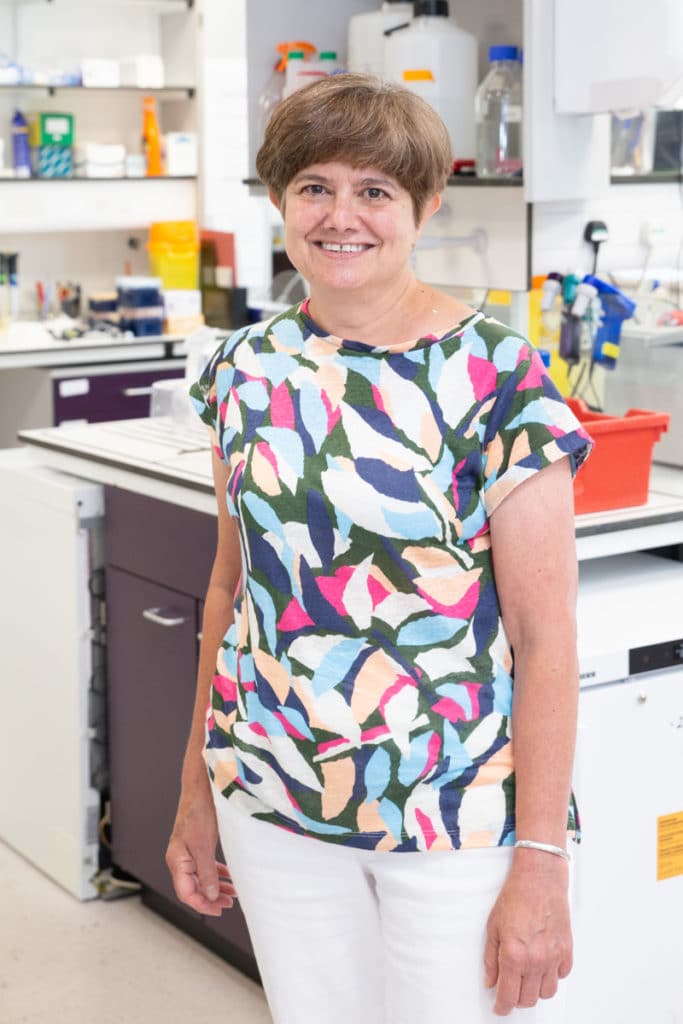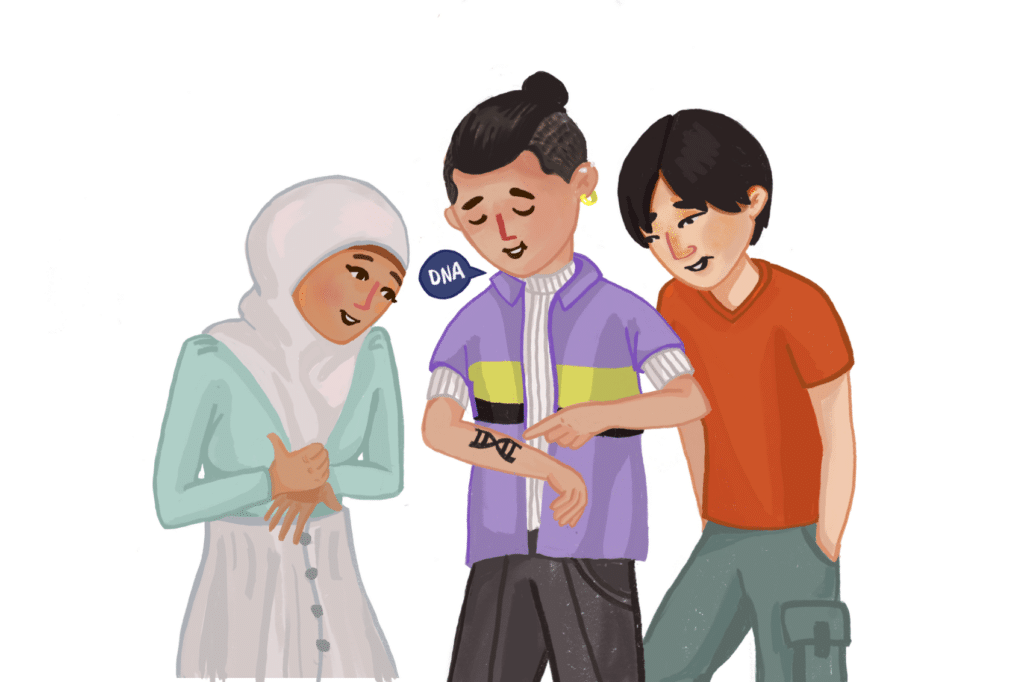
From Genes to Organisms
The ‘From Genes to Organisms’ temporary tattoo was designed for the Ahringer lab group to represent their research as part of the Tattoo my Science project.

From Genes to Organisms
If every cell in an organism has the same genes, how are they controlled so that different tissues in our bodies can form? We know that this involves each cell type turning on or off different sets of genes.
We sequence genes from each single nucleus in the nematode worm C. elegans to make maps of development from the one-cell embryo to a complex organism.
A tiny worm with ~1000 cells can teach us a lot about human development and how it can go wrong in disease.
Design by Anna Townley
Ahringer Lab Group
Developmental regulation of chromatin structure and function
Animal development is a remarkable process during which a single-celled totipotent zygote produces a myriad of different cell types. A driving force is the differential control of chromatin activity, which establishes gene expression programmes that drive cellular identity. Deciphering this control is necessary for understanding how the genome directs development and the diseases that result from chromatin dysregulation.

Mutant worms and human development & disease
Julie & Anna (the scientist who designed the tattoo) took part in a live panel event as part of the Cambridge Festival in 2021. Click the video to watch the full recording on YouTube.
‘How tiny mutant worms help us understand human development and disease’, featuring: –A tour of the Gurdon Institute –A colourful presentation by PhD student Anna Townley, illustrating how the tiny nematode worm C. elegans became a favourite model organism for developmental biology research –A panel including Profs Julie Ahringer and Eric Miska answering questions on this topic and more.

Share your tattoo!
Remember if you post a photo of your tattoo on Instagram, tag us @gurdoninstitute




